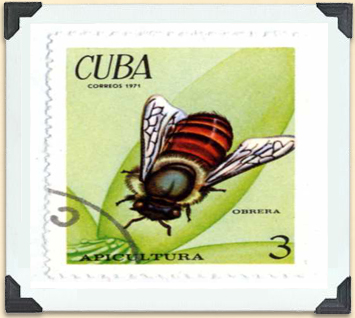The residue of imidacloprid in the nectar and pollens of the plants is toxic not only to adult honeybees but also the larvae. Our understanding of the risk of imidacloprid to larvae of the honeybees is still in a very early stage. In this study, the capped-brood, pupation and eclosion rates of the honeybee larvae were recorded after treating them directly in the hive with different dosages of imidacloprid. The brood-capped rates of the larvae decreased significantly when the dosages increased from 24 to 8000 ng/larva. However, there were no significant effects of DMSO or 0.4 ng of imidacloprid per larva on the brood-capped, pupation and eclosion rates. Although the sublethal dosage of imidacloprid had no effect on the eclosion rate, we found that the olfactory associative behavior of the adult bees was impaired if they had been treated with 0.04 ng/larva imidacloprid in the larval stage. These results demonstrate that a sublethal dosage of imidacloprid given to the larvae affects the subsequent associative ability of the adult honeybee workers. Thus, a low dose of imidacloprid may affect the survival condition of the entire colony, even though the larvae survive to adulthood.
Source:
Yang E-C, Chang H-C, Wu W-Y, Chen Y-W (2012) Impaired Olfactory Associative Behavior of Honeybee Workers Due to Contamination of Imidacloprid in the Larval Stage. PLoS ONE 7(11): e49472. doi:10.1371/journal.pone.0049472
http://www.plosone.org/article/info%3Adoi%2F10.1371%2Fjournal.pone.0049…

- Login om te reageren
